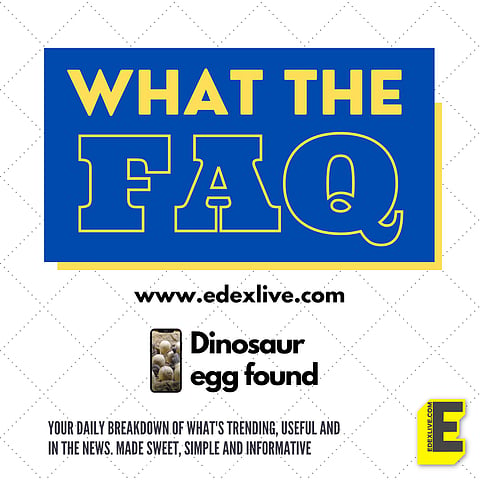

In what looks like Jurassic Park in real life, scientists have discovered an embryo of a dinosaur that has been preserved perfectly for over 66 million years. If this harks memories of the chilling scenes from the 1993 Steven Spielberg-directed blockbuster, you're probably not alone. But rest assured, there is no cause to worry. It's just a fossil. Here's all you need to know about this dinosaur egg and what it means for the scientific community.
What have the scientists found and where?
According to scientists, the embryo that they found was about to hatch like an egg but never made it out. The egg belonged to an oviraptorosaur also known as a toothless theropod dinosaur. Researchers hailed the discovery, stating that it's perhaps the best preserved dinosaur eggs ever found. The egg was found in the Ganzhou area in Southern China.
READ ALSO : New research by University of Bristol unveils quirky insights about dinosaur's brain, eating habits
What type of dinosaur is this?
Oviraptorosaurs were bird-like dinosaurs and even had feathers. These dinosaurs existed in the Late Cretaceous period in parts of what we now call the continents of North America and Asia. According to researchers, these dinosaurs had beaks of variable sizes and also had different diets. Speaking of its size, scientists said that this species could be as small as turkeys to eight metres long like Gigantoraptors.
How was the embryo preserved?
In all probabilities, the dinosaur egg was preserved after it was hidden due to a mudslide. Researchers believe that this could have protected the egg from scavenger attacks. The egg is 17 centrimetres long and the dinosaur inside is 27 centrimetres long. Had it survived, it could have grown to at least three metres long and would have been a herbivore.
How does this relate to modern birds?
According to University of Edinburgh's Professor Steve Brusatte, the prenatal dinosaur was found curled up inside the egg much like how prenatal birds are curled inside their eggs. He says this proves that several characteristics in modern birds had evolved from dinosaurs.
